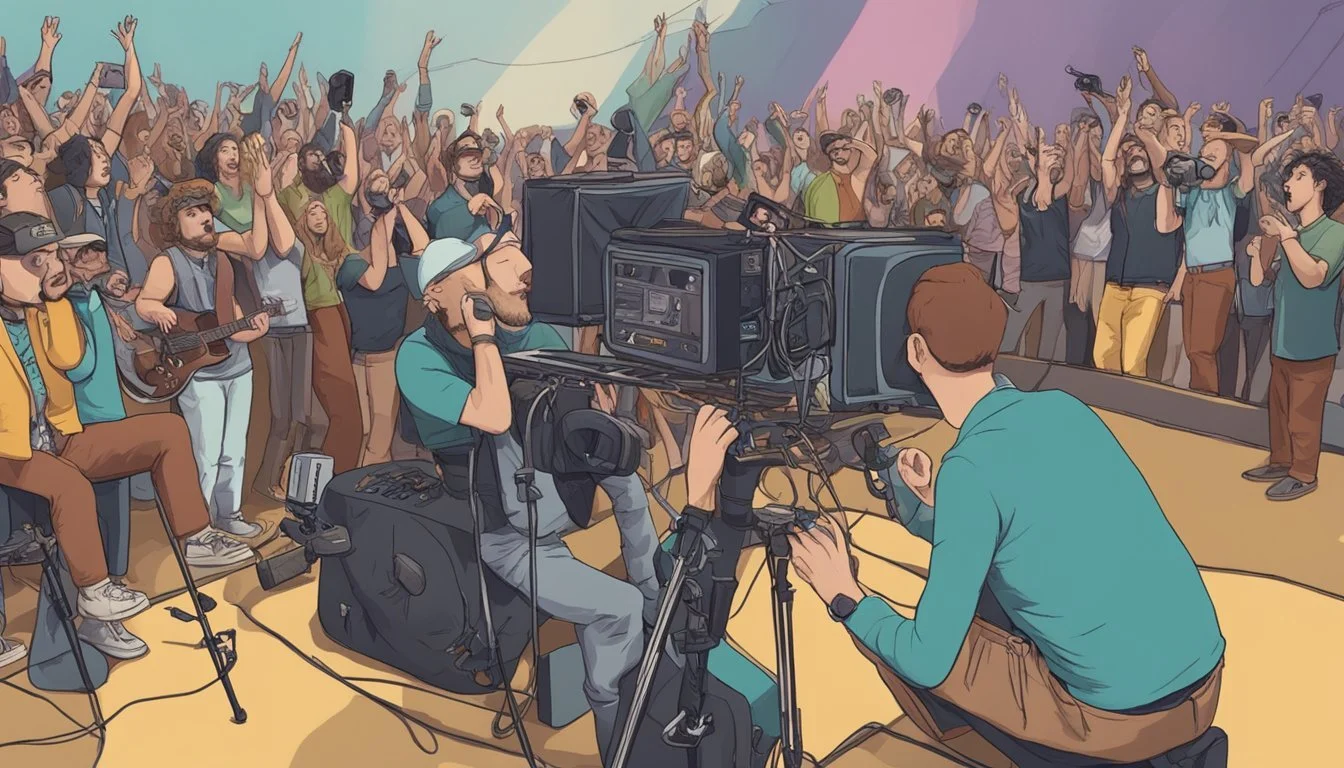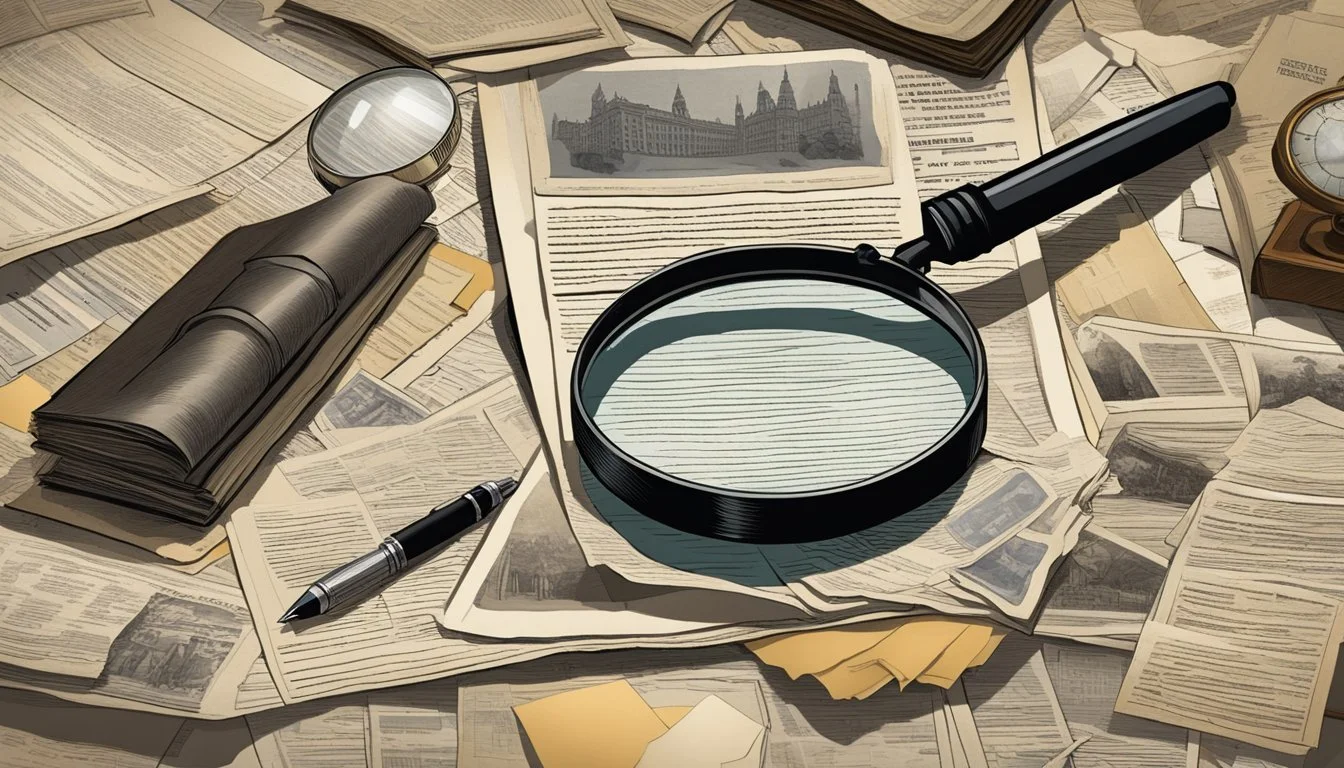9 Eye-Opening Documentaries on Famous Hoaxes and Their Unraveling
Exposing Deception Through Film
Documentaries exploring famous hoaxes provide fascinating insights into human nature, deception, and the power of storytelling. These films delve into some of the most notorious fabrications in history, revealing the motivations, methods, and consequences behind elaborate schemes that fooled many.
The best hoax documentaries not only expose falsehoods but also examine wider societal impacts and cultural phenomena that allow misinformation to spread. They shine a light on media manipulation, the blurred lines between fact and fiction, and the often blurry ethics surrounding truth in storytelling. Through expert interviews, archival footage, and dramatic reenactments, these documentaries unravel complex webs of deceit.
1) 'The Great Moon Hoax' by Richard Adams Locke
'The Great Moon Hoax' stands as one of the most famous media hoaxes in history. In 1835, Richard Adams Locke, a writer for the New York Sun newspaper, crafted a series of six articles that captivated readers worldwide.
The articles claimed to reveal astonishing discoveries about life on the moon, falsely attributed to renowned astronomer Sir John Herschel. Locke's writings described fantastic lunar landscapes, bizarre creatures, and even a civilization of winged humanoids.
Locke's hoax employed scientific jargon and detailed descriptions to lend credibility to the outlandish claims. The Sun's circulation soared as readers eagerly consumed each installment of the lunar tale.
The success of the hoax stemmed from the public's fascination with astronomical discoveries and the emerging field of science journalism. Many readers initially believed the reports, showcasing the power of media to shape public perception.
Eventually, the truth emerged, and the articles were revealed as a clever work of fiction. Despite this, 'The Great Moon Hoax' left a lasting impact on journalism and popular culture, highlighting the fine line between sensationalism and factual reporting.
2) 'The Lost Tomb of Jesus' documentary by Simcha Jacobovici
'The Lost Tomb of Jesus' is a 2007 documentary directed by Simcha Jacobovici and produced by James Cameron. The film claims to have discovered the family tomb of Jesus Christ in Jerusalem.
The documentary presents archaeological findings from the Talpiot Tomb, including ossuaries with inscriptions that allegedly match Jesus' family members. It sparked controversy and debate among scholars and religious experts.
Many archaeologists and biblical scholars criticized the film's methods and conclusions. They argued that the evidence presented was insufficient to support such extraordinary claims.
The documentary used re-enactments and expert interviews to support its thesis. It suggested that Jesus was buried with his wife and child, challenging fundamental Christian beliefs.
Despite the controversy, the film gained significant media attention. It aired on the Discovery Channel and sparked discussions about archaeology, religion, and historical evidence.
Critics accused the filmmakers of sensationalism and misrepresenting evidence. The documentary's claims remain widely disputed in academic circles.
3) 'Incident at Loch Ness' featuring Werner Herzog
'Incident at Loch Ness' is a 2004 mockumentary that blurs the lines between reality and fiction. The film follows renowned director Werner Herzog as he attempts to make a documentary about the Loch Ness Monster.
The movie-within-a-movie format creates layers of deception, keeping viewers guessing about what's real and what's staged. Herzog plays himself, lending credibility to the premise.
As the production unfolds, strange events occur on set. A producer hires fake experts and a cryptozoologist, adding to the confusion. The film crew encounters unexpected challenges, including a supposed monster sighting.
The documentary's authenticity comes into question as the line between fact and fiction becomes increasingly blurred. Viewers are left to ponder whether they're watching a genuine documentary gone awry or an elaborate hoax.
'Incident at Loch Ness' serves as a commentary on the nature of truth in filmmaking. It challenges audiences to think critically about the information presented in documentaries and media.
The film's clever use of Herzog's reputation and the enduring mystery of the Loch Ness Monster creates an engaging exploration of belief, skepticism, and the power of storytelling.
4) 'Spinal Tap: This is Spinal Tap' by Rob Reiner
Rob Reiner's 1984 film "This Is Spinal Tap" revolutionized comedy by pioneering the mockumentary genre. The movie follows a fictional British heavy metal band on their chaotic American tour.
Christopher Guest, Michael McKean, and Harry Shearer star as the band members, delivering largely improvised performances. Their deadpan humor and attention to detail created a convincing portrayal of a struggling rock group.
The film's authenticity fooled many viewers into believing Spinal Tap was a real band. Its realistic depiction of the music industry and band dynamics blurred the lines between fact and fiction.
"This Is Spinal Tap" gained critical acclaim and a devoted following. It became known for its highly quotable dialogue and satirical take on rock documentaries popular at the time.
The movie's influence extends beyond comedy, impacting both film and music. Its clever blend of humor and realism set a new standard for mockumentaries and continues to resonate with audiences decades after its release.
5) 'The Amityville Horror' investigation documentary
The Amityville Horror case has captivated audiences for nearly five decades. This infamous story centers on a family who claimed their Long Island home was haunted after a mass murder occurred there.
Several documentaries have explored the truth behind these events. One notable production is the History Channel's "Amityville Confidential" from 2005. It was among the first to critically analyze the house and circumstances that inspired the bestselling 1977 book.
More recently, Epix released "Amityville: An Origin Story" in 2023. This limited series takes an elevated look at the case, examining the intersection of mass murder, 1970s paranormal interest, and the horror film genre's growth.
The documentary features interviews with key figures, including Christopher Lutz, a member of the family at the center of the alleged haunting. It aims to provide a comprehensive exploration of the events that led to the Amityville Horror phenomenon.
These documentaries attempt to separate fact from fiction in a case that has become deeply ingrained in American pop culture. They offer viewers a chance to reassess the story's veracity and cultural impact.
6) 'The Cottingley Fairies' documentary
'The Cottingley Fairies' documentary explores one of the most famous hoaxes of the 20th century. It delves into the story of two young girls, Elsie Wright and Frances Griffiths, who claimed to have photographed fairies in 1917.
The film examines the five photographs that captivated the public and fooled many, including Sir Arthur Conan Doyle. It reveals how the girls used cardboard cutouts and hatpins to create the illusion of fairies in their garden.
The documentary showcases the analysis of the cameras used to capture the images. It also explores the societal context that allowed the hoax to gain traction, including the widespread interest in spiritualism after World War I.
Viewers learn about the decades-long silence maintained by Elsie and Frances. The film details how they finally admitted to the hoax in the 1980s, while still insisting that they had seen real fairies.
'The Cottingley Fairies' documentary provides insights into the power of belief and the human desire for magic and mystery. It serves as a fascinating study of how a simple prank can evolve into a cultural phenomenon.
7) 'The Protocols of the Elders of Zion' exposé
'The Protocols of the Elders of Zion' is a notorious fraudulent document that fueled anti-Semitism in the early 20th century. This fabricated text claimed to reveal a Jewish plan for global domination.
The document first appeared in a Russian newspaper in 1903. It purported to be the minutes of a meeting of Jewish leaders plotting to take over the world.
Despite being exposed as a forgery, the Protocols gained traction among anti-Semites. It was used as propaganda by various groups, including the Nazi regime in Germany.
Several investigations and exposés have thoroughly debunked the Protocols. Researchers discovered it was largely plagiarized from unrelated works of fiction and political satire.
The document's fraudulent nature has been widely acknowledged by scholars and historians. Yet it continues to circulate in some circles, perpetuating harmful conspiracy theories.
Documentaries examining the Protocols often explore its origins, spread, and lasting impact. They highlight the dangers of unchecked misinformation and the persistence of anti-Semitic myths.
8) 'The War of the Worlds' radio drama by Orson Welles
On October 30, 1938, Orson Welles and the Mercury Theatre on the Air broadcast a dramatic adaptation of H.G. Wells' novel "The War of the Worlds" on CBS Radio. The program presented a fictional Martian invasion of Earth in the style of breaking news bulletins.
The broadcast's realistic format caused panic among some listeners who believed the events were actually occurring. Reports of widespread hysteria were likely exaggerated by newspapers, but the incident demonstrated the power of radio as a medium.
Welles directed and narrated the hour-long drama, which began with dance music interrupted by increasingly urgent news flashes. The program described Martian cylinders landing in New Jersey and heat-ray attacks on nearby towns.
Despite periodic disclaimers that the show was fictional, some audience members missed these announcements. The broadcast highlighted the public's trust in radio news and raised questions about media responsibility.
The "War of the Worlds" radio drama became one of the most famous broadcasts in history. It launched Orson Welles to national prominence and sparked discussions about the impact of mass media on society.
9) 'Piltdown Man' evolution hoax documentary
The Piltdown Man hoax stands as one of the most notorious scientific frauds in history. A documentary exploring this deception would likely delve into the 1912 "discovery" of supposed early human remains in Sussex, England.
The film might examine how amateur archaeologist Charles Dawson presented fragments of a skull and jawbone, claiming they belonged to a prehistoric human ancestor. These fossils appeared to support the prevailing theory that human brain development preceded other evolutionary changes.
Viewers would learn how the scientific community initially accepted the find as genuine. The documentary could trace the 40-year period during which Piltdown Man was considered a crucial piece of evidence in human evolution.
The film would then reveal how the hoax was eventually exposed in 1953. Modern analysis techniques proved the skull fragments were human, while the jawbone came from an orangutan. Both had been artificially aged and planted at the site.
A thorough documentary might explore potential motivations behind the fraud and examine its impact on the field of paleoanthropology. It could also highlight how this incident led to improved verification methods in scientific research.
The Psychology Behind Hoaxes
Hoaxes tap into fundamental aspects of human psychology and social dynamics. They exploit cognitive biases, emotional vulnerabilities, and the ways information spreads through media channels.
Understanding Why People Believe
People often fall for hoaxes due to confirmation bias - the tendency to accept information that aligns with existing beliefs. Emotional appeal plays a key role, as hoaxes frequently target fears or desires. The fear of missing out (FOMO) can drive individuals to accept false claims without thorough verification.
Cognitive dissonance makes it difficult for people to admit they've been fooled, even when presented with contradictory evidence. This resistance to changing beliefs helps perpetuate hoaxes.
Group dynamics also influence belief. People may accept false information if it's widely shared within their social circles or endorsed by trusted figures.
The Role of Media in Hoaxes
Media platforms can inadvertently amplify hoaxes through rapid information sharing. Social media algorithms often prioritize engaging content over accuracy, allowing false claims to spread quickly.
Traditional media may contribute by reporting on viral stories before thorough fact-checking. The pressure to break news first can lead to premature publication of unverified information.
Media literacy plays a crucial role in combating hoaxes. Understanding how to evaluate sources, cross-reference information, and recognize red flags can help individuals resist false claims.
Echo chambers in both traditional and social media can reinforce beliefs in hoaxes by limiting exposure to diverse perspectives and fact-based reporting.
Case Studies of Famous Hoaxes
Famous hoaxes have captivated public attention and exposed vulnerabilities in media, science, and society. These deceptions often unfold dramatically before being exposed.
Impact on Society
The Hitler Diaries hoax of 1983 shook the publishing world. Stern magazine paid millions for what they believed were Adolf Hitler's personal journals. The forgeries fooled historians and generated massive publicity.
The Piltdown Man fossil discovery in 1912 misled the scientific community for decades. This fraudulent human ancestor specimen distorted views on human evolution for 40 years until exposed as a hoax in 1953.
The 1938 "War of the Worlds" radio broadcast caused widespread panic. Many listeners believed the fictional alien invasion was real, highlighting media's powerful influence.
Lessons Learned
Hoaxes reveal the importance of critical thinking and fact-checking. The Hitler Diaries fraud emphasized the need for rigorous authentication of historical documents.
The Piltdown Man incident led to improved scientific verification methods. It demonstrated how preconceived notions can cloud objective analysis.
Media literacy became a key focus after the "War of the Worlds" broadcast. It showed how format and delivery can impact audience perception of information.
These cases underscore the need for skepticism and thorough investigation. They remind us to question extraordinary claims and seek multiple sources of verification.





